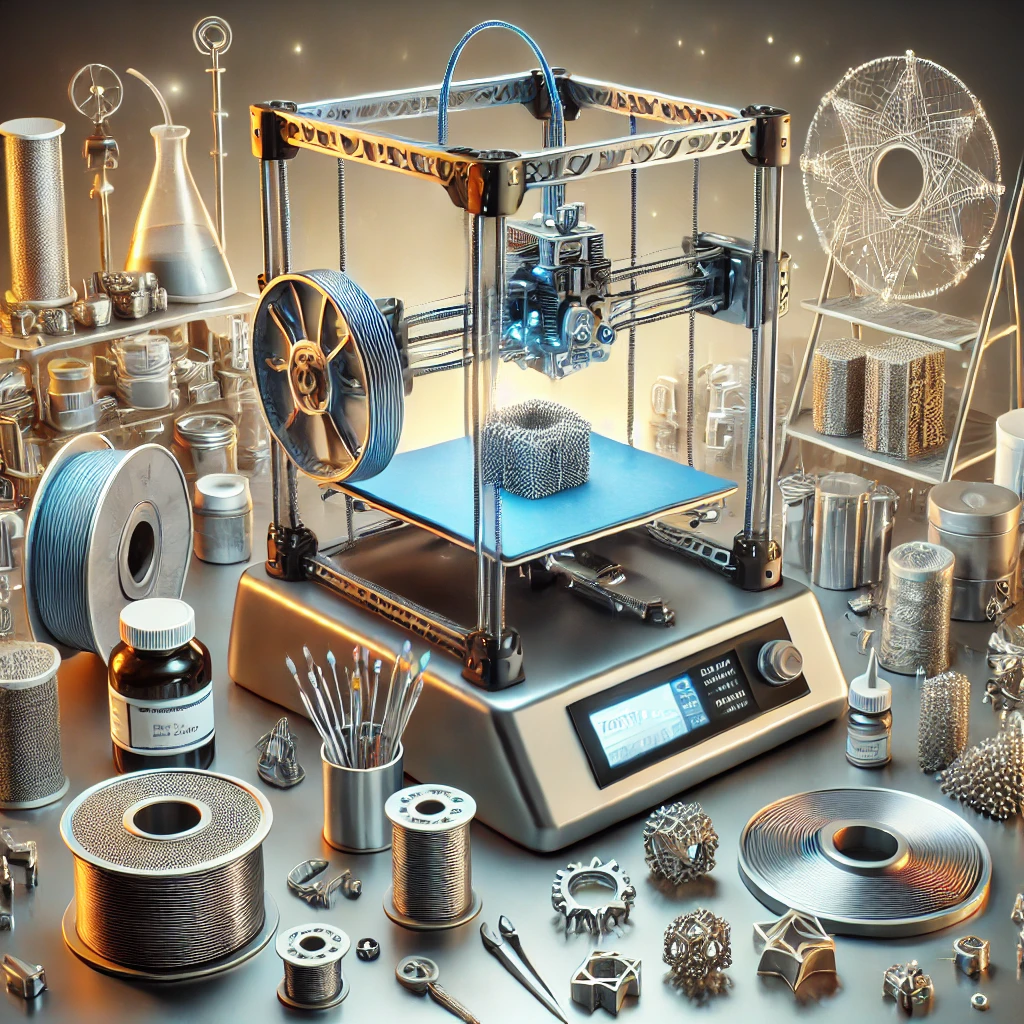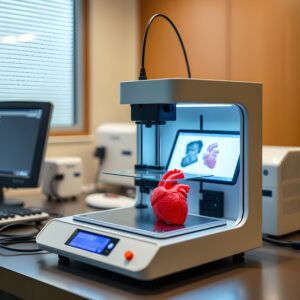Essential Content for 3D Printing: Key Questions Answered

3D printing has come a long way since its inception in the 1980s. Today, it plays a pivotal role in a wide range of industries, from healthcare to aerospace, automotive, and entertainment. The technology allows for the creation of complex designs directly from digital files, eliminating the need for traditional molds or tooling. As we move into 2024, 3D printing continues to evolve with new materials, advanced techniques, and applications emerging every day. This article aims to answer some of the key questions about 3D printing, covering its fundamentals, materials, printer types, benefits, challenges, and future trends.
Whether you’re a beginner looking to start with 3D printing or a seasoned professional exploring the latest in the field, this article will provide you with the essential knowledge to navigate the world of 3D printing.
What is 3D Printing?
3D printing, also known as additive manufacturing, is a process that creates physical objects by layering materials based on a digital design. Unlike traditional manufacturing methods, which often involve cutting away material (subtractive manufacturing), 3D printing adds material layer by layer to build up a structure. This makes it possible to create complex geometries that would be impossible or highly costly with conventional methods.
At the core of 3D printing is a digital 3D model, usually created using Computer-Aided Design (CAD) software. The model is then converted into a format that a 3D printer can understand (typically .STL or .OBJ files). These files are sent to the printer, which reads the data and begins constructing the object from the bottom up.
There are various types of 3D printing technologies, each with its own advantages, materials, and ideal applications. These include Fused Deposition Modeling (FDM), Stereolithography (SLA), and Selective Laser Sintering (SLS), among others.
How Does 3D Printing Work?
The 3D printing process typically involves several steps:
-
Design: The process starts with designing a 3D model using CAD software. The model can be as simple as a basic shape or as complex as intricate mechanical parts or artistic sculptures. For those new to 3D printing, user-friendly software like TinkerCAD or Fusion 360 can be a good starting point.
-
Slicing: Once the design is complete, the 3D model needs to be converted into a set of instructions that the 3D printer can follow. This is done through a process called slicing, where the 3D model is divided into thin horizontal layers. Software like Cura or PrusaSlicer is used to slice the model and generate G-code, the language that tells the printer how to print each layer.
-
Printing: After slicing, the printer begins building the object layer by layer. For FDM printers, this involves melting filament and extruding it onto the print bed in the desired shape. SLA printers use a laser to cure liquid resin layer by layer, while SLS printers use lasers to sinter powder material into solid objects.
-
Post-Processing: Once the object is printed, it may require additional steps like cleaning, curing, or finishing, especially if it was printed using resin-based methods. Some parts might also need to be assembled or painted, depending on the intended use.
What Are the Key Materials Used in 3D Printing?
The materials used in 3D printing play a critical role in determining the quality, durability, and functionality of the final product. Different 3D printing technologies support different materials, each with unique properties and advantages.
1. PLA (Polylactic Acid)
PLA is one of the most common and beginner-friendly materials for 3D printing. It is made from renewable resources like corn starch or sugarcane, making it an environmentally friendly option. PLA is easy to print with, offers good resolution, and is available in a variety of colors. However, it is relatively brittle and not ideal for applications requiring high durability.
2. ABS (Acrylonitrile Butadiene Styrene)
ABS is another widely used material known for its strength and flexibility. It is commonly used for manufacturing parts that need to endure wear and tear. ABS is more durable than PLA but requires higher printing temperatures and can emit fumes during the printing process, so proper ventilation is recommended.
3. PETG (Polyethylene Terephthalate Glycol)
PETG is a versatile material known for its strength, durability, and resistance to chemicals. It combines the best features of PLA and ABS: it is easier to print with than ABS but more durable than PLA. PETG is commonly used for creating functional parts, containers, and mechanical components.
4. Resin
Resin-based 3D printing methods, such as SLA and DLP, use liquid resin that is hardened by light. Resin prints have high accuracy and fine details, making them ideal for prototypes, jewelry, and dental applications. However, resin printing often requires more post-processing and can be more expensive than filament-based methods.
5. Metal
Metal 3D printing uses techniques like Selective Laser Melting (SLM) or Direct Metal Laser Sintering (DMLS) to melt and fuse metal powders into solid objects. Metal 3D printing is widely used in aerospace, automotive, and medical industries for producing strong, lightweight parts.
6. New Materials in 2024
In 2024, there is an increasing focus on developing sustainable materials for 3D printing. This includes biodegradable filaments made from recycled plastics, bio-based resins, and even materials for use in bioprinting. These innovations are paving the way for more environmentally friendly and efficient 3D printing practices.
What Are the Different Types of 3D Printers?
There are several types of 3D printers, each suited to different applications and materials. The most common types include:
1. FDM (Fused Deposition Modeling)
FDM is the most popular type of 3D printing, especially for beginners and hobbyists. In FDM printing, a filament is heated until it melts and is extruded through a nozzle, building up the object layer by layer. FDM printers are relatively affordable and can print with a wide range of materials, including PLA, ABS, and PETG. However, they typically have lower resolution compared to other methods.
2. SLA (Stereolithography)
SLA printers use a laser to cure liquid resin into solid layers. The high precision and fine detail make SLA ideal for producing models with intricate details, such as jewelry or dental molds. SLA printers are often used in industries that require high-accuracy prints, but they can be more expensive and require additional post-processing steps.
3. SLS (Selective Laser Sintering)
SLS printers use a laser to fuse powdered materials (such as nylon or metal) into a solid object. SLS offers high strength and durability, making it ideal for producing functional prototypes and end-use parts. Unlike FDM and SLA, SLS doesn’t require support structures, as the powder itself acts as support during the printing process.
4. Other Printer Types
Other types of 3D printers include DLP (Digital Light Processing), MJF (Multi Jet Fusion), and binder jetting, each suited to specific industries and applications. For example, MJF is used for high-volume production of functional parts, while binder jetting is ideal for printing sandcastings or full-color models.
What Are the Benefits of 3D Printing?
3D printing offers a wide range of benefits that are revolutionizing industries:
1. Cost-Effectiveness
For small production runs, 3D printing is often more affordable than traditional manufacturing methods. It eliminates the need for expensive molds, tooling, and setup costs, making it an attractive option for startups and small businesses.
2. Customization
3D printing allows for rapid customization of products. From personalized medical implants to custom automotive parts, 3D printing can produce one-of-a-kind items that would be challenging to create using traditional methods.
3. Speed and Efficiency
3D printing enables rapid prototyping, which is especially valuable in industries like automotive and aerospace, where design iterations are frequent. Parts can be printed in a fraction of the time compared to conventional methods.
4. Sustainability
3D printing is often more sustainable than traditional manufacturing because it generates less waste. Materials are used precisely where they are needed, reducing excess material consumption. Additionally, advancements in recycling and bio-based materials are making 3D printing even more eco-friendly.
What Are the Challenges and Limitations of 3D Printing?
Despite its many advantages, 3D printing faces several challenges and limitations:
1. High Initial Cost
While the cost of 3D printers has dropped in recent years, high-quality industrial-grade 3D printers can still be quite expensive. This can be a barrier to entry for businesses that want to adopt 3D printing for mass production.
2. Limited Materials
Although 3D printing supports a wide range of materials, it is still limited compared to traditional manufacturing methods. While PLA and ABS are common, they might not be suitable for all applications, particularly those requiring specialized materials like metals or advanced composites.
3. Print Speed
For large or complex objects, 3D printing can be slower compared to traditional manufacturing methods. High-quality prints, especially those with intricate details, may take hours or even days to complete, which can be impractical for certain industries.
4. Resolution and Surface Finish
The resolution of a 3D print can sometimes fall short of the high standards required for specific applications, such as in fine art or high-precision engineering. Post-processing may be required to smooth surfaces or remove visible layer lines.
What Are the Future Trends in 3D Printing?
Looking ahead to 2024 and beyond, 3D printing continues to evolve with exciting advancements:
1. AI and Machine Learning Integration
AI is being integrated into 3D printing processes to optimize print quality, predict potential issues, and improve efficiency. In the future, AI could play a central role in automating the entire 3D printing workflow.
2. Bioprinting and Medical Advancements
Bioprinting, which involves printing tissues, organs, and other biological materials, is expected to see significant advancements in 2024. Researchers are exploring the possibility of printing functional human tissues for medical applications.
3. Large-Scale 3D Printing
3D printing is expanding into large-scale manufacturing, with companies using it to print entire buildings, vehicles, and aerospace components. This shift has the potential to revolutionize construction, automotive, and other industries by reducing waste and increasing efficiency.
4. Sustainability and Recycling
With growing concerns about the environment, 3D printing is moving toward sustainability. 3D printers that use recycled materials and more eco-friendly resins are becoming more common, allowing for greener production methods.
3D printing has made significant strides in recent years and continues to transform industries worldwide. From prototyping to manufacturing to healthcare, its versatility and cost-effectiveness make it an essential tool in the modern world. As we look toward 2024, it is clear that the future of 3D printing holds even greater promise with innovations in materials, printer technologies, and applications.
For anyone interested in diving deeper into 3D printing, now is the perfect time to explore the various opportunities it presents. Whether you are a hobbyist, a business owner, or a professional, understanding the basics of 3D printing and staying informed about the latest trends will be invaluable as the technology continues to evolve.




